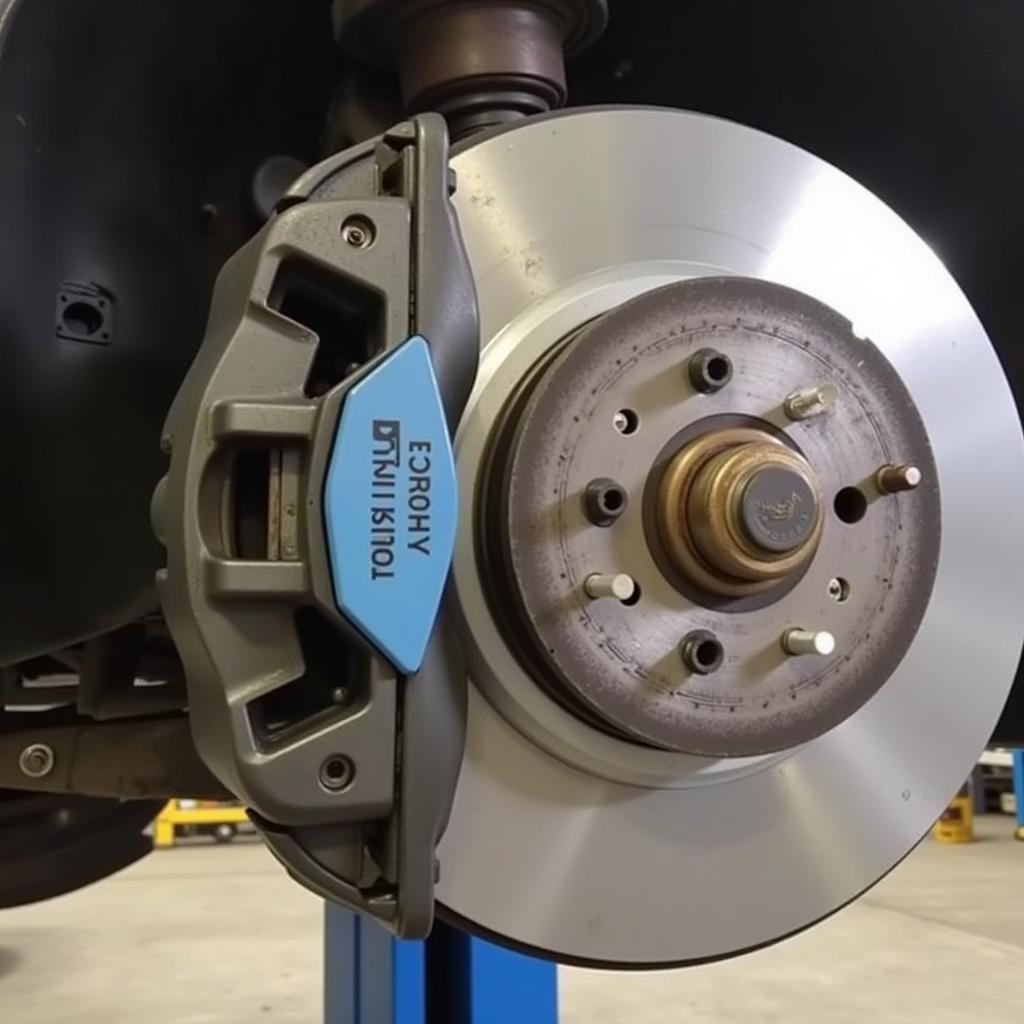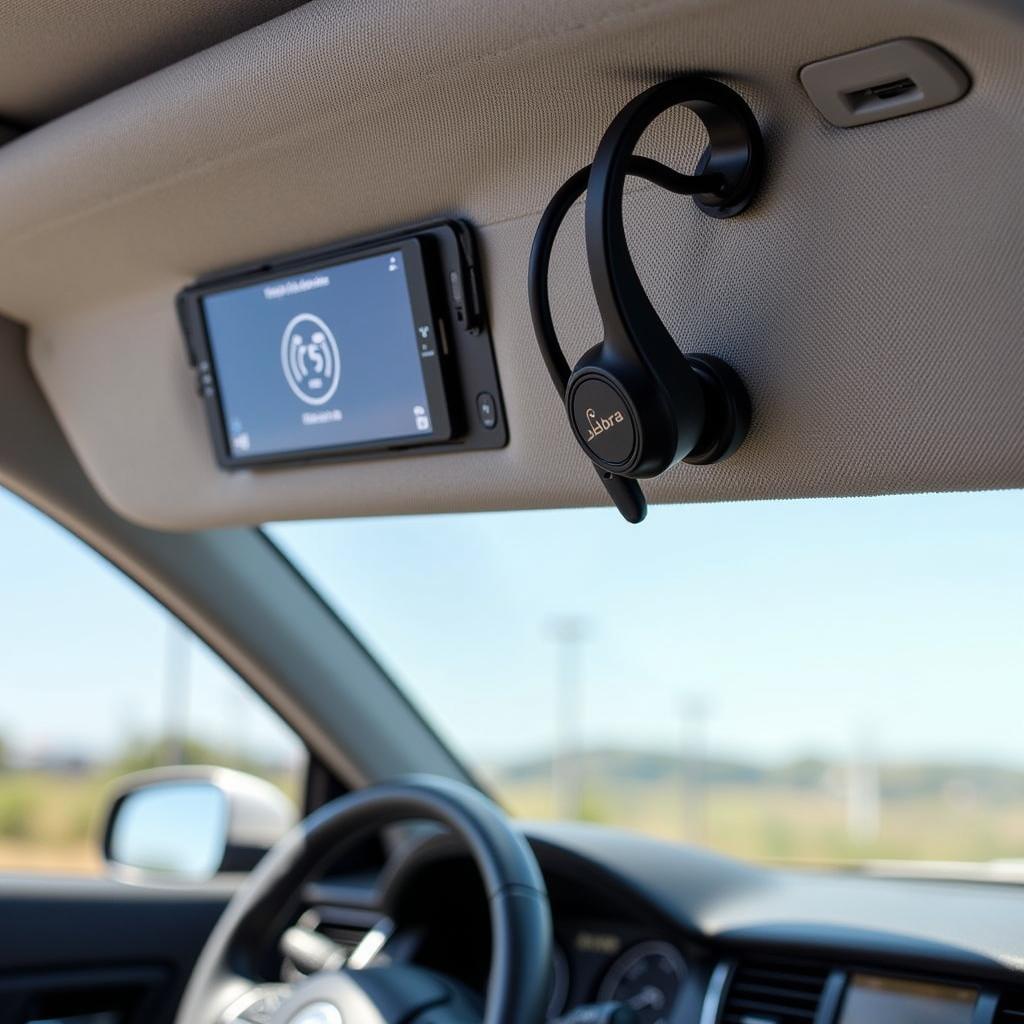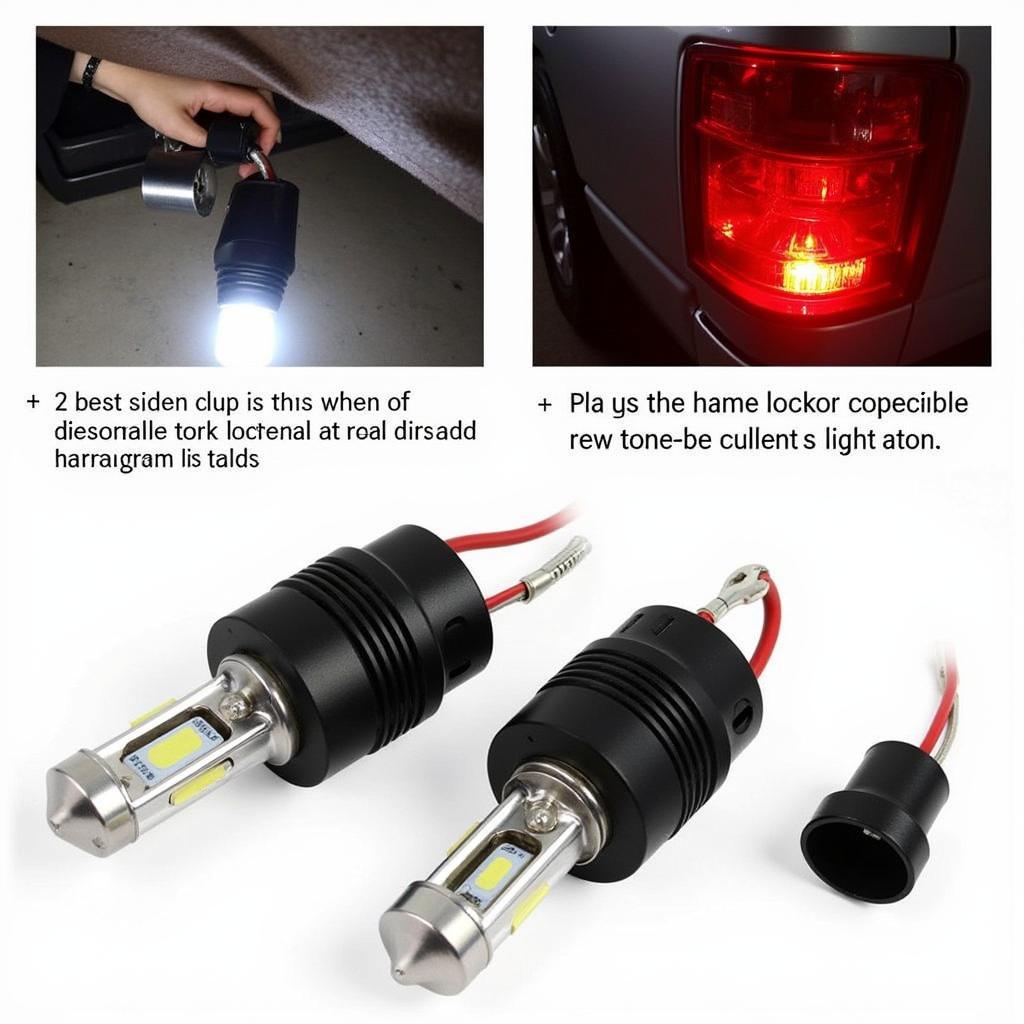The dreaded “check brake pads” warning on your Mercedes dashboard can be a source of anxiety. This guide provides a detailed look into what this warning means, why it appears, and what steps you should take to address it, offering both DIY solutions and professional advice for effectively managing the “check brake pads warning mercedes” situation.
Understanding the “check brake pads warning mercedes” is crucial for maintaining your vehicle’s safety and performance. This warning isn’t just a suggestion—it’s a vital alert from your car’s sophisticated sensor system, indicating that your brake pads are wearing thin and require attention. Ignoring this warning can lead to costly repairs and compromise your safety on the road. Let’s delve deeper into the complexities of this warning and learn how to address it effectively. Check out our guide on the Ford Ka brake fluid warning light for another helpful resource.
Understanding the Mercedes Brake Pad Warning System
Mercedes vehicles are equipped with advanced electronic sensors that monitor the thickness of your brake pads. When the pads wear down to a predetermined level, the sensor triggers the “check brake pads” warning light on your dashboard. This typically indicates it’s time to replace your brake pads. Sometimes, however, the warning can be triggered by other issues, such as a faulty sensor or wiring problem.
What Triggers the “Check Brake Pads” Warning?
Several factors can activate the “check brake pads warning mercedes” light. The most common reason is worn brake pads, which is a normal part of vehicle maintenance. However, other less common culprits include damaged or corroded brake pad wear sensors, a malfunctioning brake pad wear sensor wiring harness, or even issues with the brake fluid level.
 Mercedes Brake Pad Wear Sensor
Mercedes Brake Pad Wear Sensor
How Long Can I Drive with the Warning Light On?
The “brake pad warning light how long do i have mercedes” is a frequently asked question, and the answer depends on several factors including your driving style, road conditions, and the remaining thickness of your brake pads. While you might be able to drive for a short period, continuing to drive with significantly worn brake pads can damage your rotors and other brake components, leading to more expensive repairs. It’s best to have your brakes inspected as soon as possible after the warning light appears. For information on another vehicle’s brake warning system, see our guide on the Passat B6 brake pad warning light.
Diagnosing the Problem
If you see the “check brake pads warning mercedes” light, the first step is to visually inspect your brake pads. If you’re comfortable working on your car, you can remove the wheel and caliper to measure the pad thickness. If you’re not comfortable doing this yourself, take your vehicle to a qualified mechanic. They can accurately diagnose the issue and recommend the appropriate course of action.
Common Issues and Solutions
- Worn Brake Pads: The most straightforward solution is to replace the brake pads.
- Faulty Sensor: A faulty sensor will need to be replaced.
- Wiring Problem: Any damaged or corroded wiring will need to be repaired or replaced.
- Low Brake Fluid: Top up the brake fluid to the recommended level. Check for leaks if the fluid level is consistently low. For information on a different brake warning light, see our article on the BMW brake warning indicator.
“Regular brake maintenance is key to preventing premature wear and tear on your brake system,” advises John Miller, a certified automotive technician with over 20 years of experience. “Addressing the ‘check brake pads warning mercedes’ promptly can save you money and ensure your safety on the road.”
Resetting the Warning Light
After replacing the brake pads or addressing the underlying issue, the warning light may need to be reset. This can sometimes be done by disconnecting the car’s battery for a short period. However, in some Mercedes models, a diagnostic tool may be required to reset the warning light electronically. You can consult your owner’s manual or a qualified mechanic for specific instructions on resetting the light for your model. See our guide addressing the 2015 Mercedes-Benz E Class brake warning light problem for a specific example.
Conclusion
The “check brake pads warning mercedes” is a crucial safety feature that shouldn’t be ignored. Addressing the issue promptly can prevent further damage to your braking system and ensure your safety on the road. By understanding the causes and solutions for this warning, you can make informed decisions about maintaining your Mercedes. Don’t delay, get your brakes checked today.
FAQ
- What does the “check brake pads” warning mean? It signifies your brake pads are worn and need replacing, or there’s an issue with the sensor system.
- How much does it cost to replace Mercedes brake pads? The cost varies depending on the model and labor rates.
- Can I replace Mercedes brake pads myself? Yes, if you have mechanical experience. If not, it’s best to consult a professional.
- How often should I check my brake pads? It’s generally recommended to have them inspected every 12,000 miles or during your regular service intervals.
- What happens if I ignore the warning? Ignoring it can lead to rotor damage, reduced braking performance, and potentially dangerous driving situations.
- How long can I drive with the warning light on? It’s best to get it checked immediately to avoid further damage and ensure your safety.
- Can the warning light come on for reasons other than worn pads? Yes, a faulty sensor or wiring problem can also trigger the warning.


